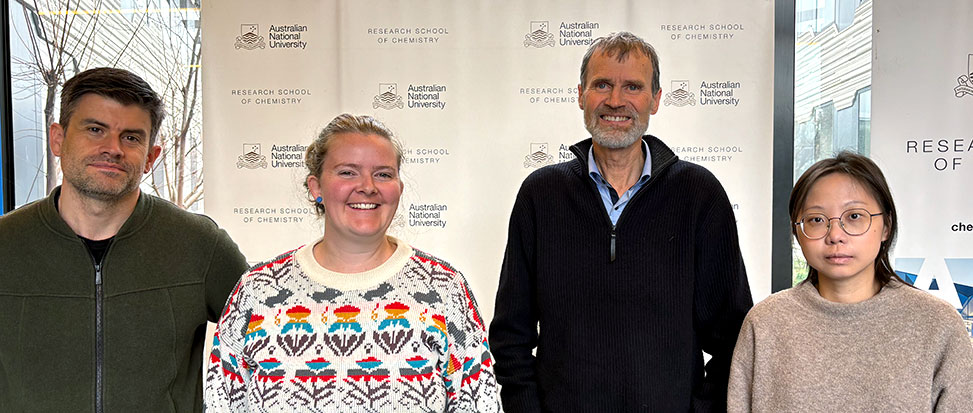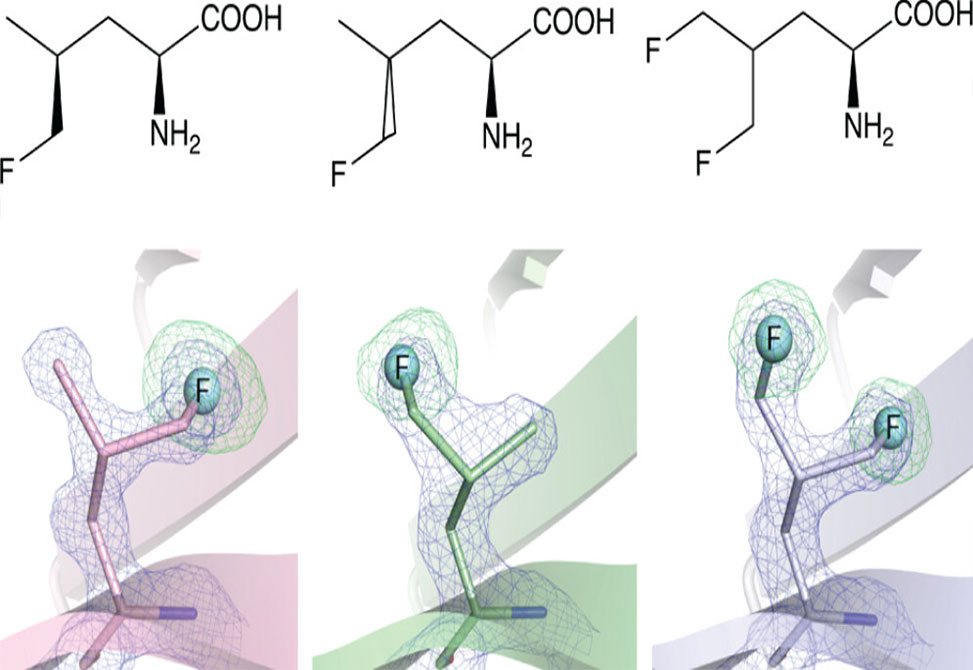Site-Specific Probes
Reflecting work in the Jackson, Otting, and Nitsche Labs
Proteins produced with leucine analogues, where CH2F groups substitute specific methyl groups, can readily be probed by 19F NMR spectroscopy. As CF and CH groups are similar in hydrophobicity and size, fluorinated leucines are expected to cause minimal structural perturbation, but the impact of fluorine on the rotational freedom of CH2F groups is unclear.
In a collaborative work between the Colin J. Jackson, Gottfried Otting, and Christoph Nitsche Groups at the Australian National University in Canberra, published in Biochemistry, group members present high-resolution crystal structures of Escherichia coli peptidyl-prolyl cis–trans isomerase B, PpiB, prepared with uniform high-level substitution of leucine by (2S,4S)-5-fluoroleucine, (2S,4R)-5-fluoroleucine, or 5,5′-difluoroleucine.

From left to right: Colin Jackson, Rebecca Frkic, Gottfried Otting, Yi Jin Tan.
Apart from the fluorinated leucine residues, the structures show complete structural conservation of the protein backbone and the amino acid side chains except for a single isoleucine side chain located next to a fluorine atom in the hydrophobic core of the protein. The carbon skeletons of the fluorinated leucine side chains are also mostly conserved.
The CH2F groups show a strong preference for staggered rotamers and often appear locked into single rotamers. Substitution of leucine CH3 groups for CH2F groups is thus readily tolerated in the three-dimensional, 3D, structure of a protein, and the rotation of CH2F groups can be halted at cryogenic temperatures.


